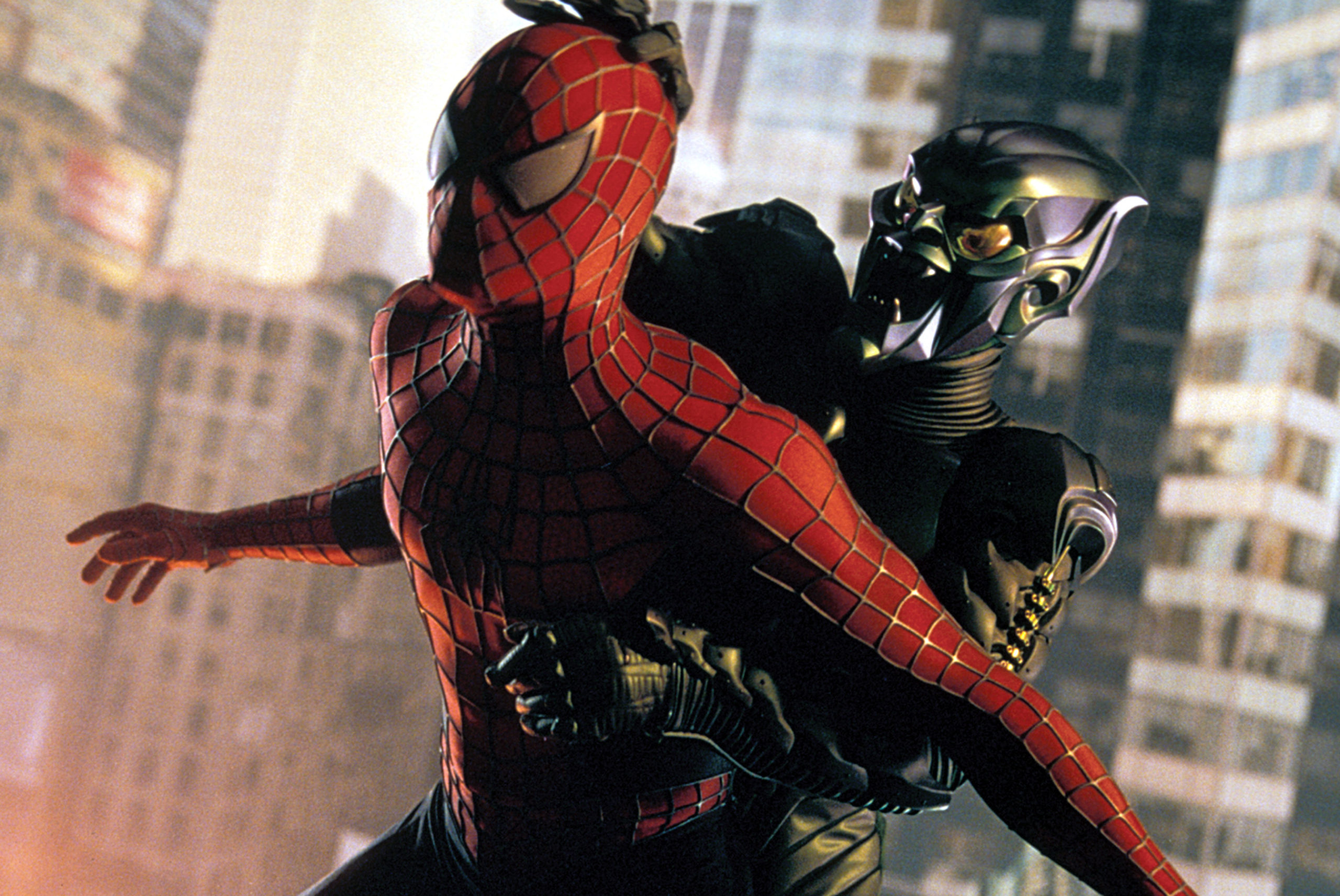Table of Contents Show
Everybody has a favorite film portrayal of Spider-Man. It doesn’t matter how much you’re invested in the Marvel Universe or the character in general, you’ve likely subconsciously chosen a side. Whether you’re a Tobey Maguire fan, an Andrew Garfield fanatic, or a Tom Holland supporter, the ultimate Spidey origin film will always be Sam Raimi’s 2002 classic, Spider-Man.
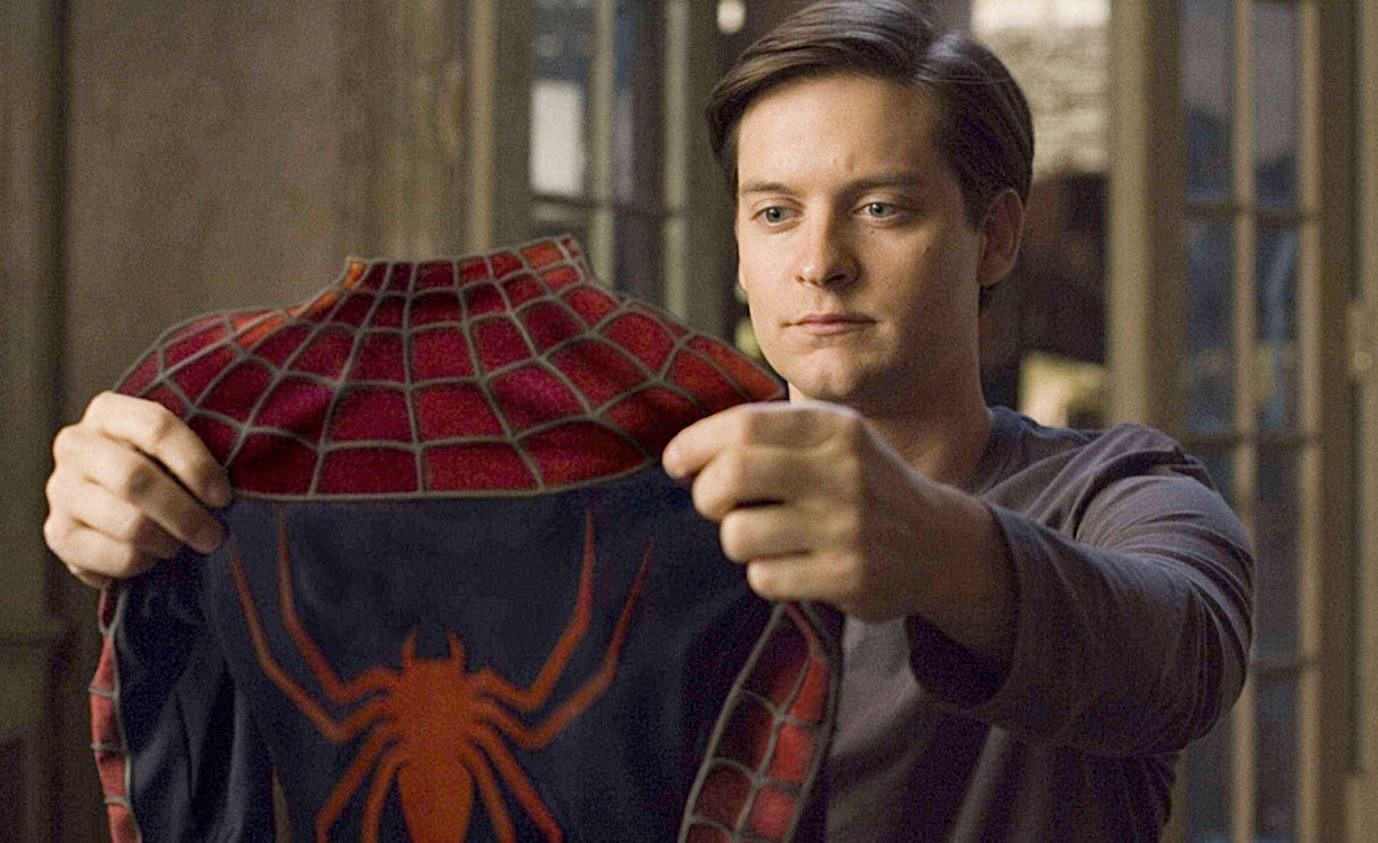
Through an incredible combination of factors, Tobey Maguire’s version of the wall-crawler introduced the world to the ultimate superhero origin story that has provided inspiration for so many others since.
A Comic Book Style
One of the reasons that Tobey’s Spider-Man succeeds is the style in which the movie is created. Raimi really embraced the traditional comic book look by factoring in the classic versus trying to modernize the character’s design. The buildings, the outfits, and even the colors are very 2000’s, but that works for this kind of character. We know it’s not the real world.
It retains the innocence of 60’s comic books and yet holds a compelling story that is impactful and makes sense to both young and old alike. Nothing is so complicated that it can’t be understood, but the characters are also deep and complex. This is further supported by film critic Matt Goldberg, who states that the film “sets the template for the superhero origin story, borrowing heavily from Richard Donner’s Superman, but also trying to straddle the line between “realistic” and corny comic books” (( Goldberg )).
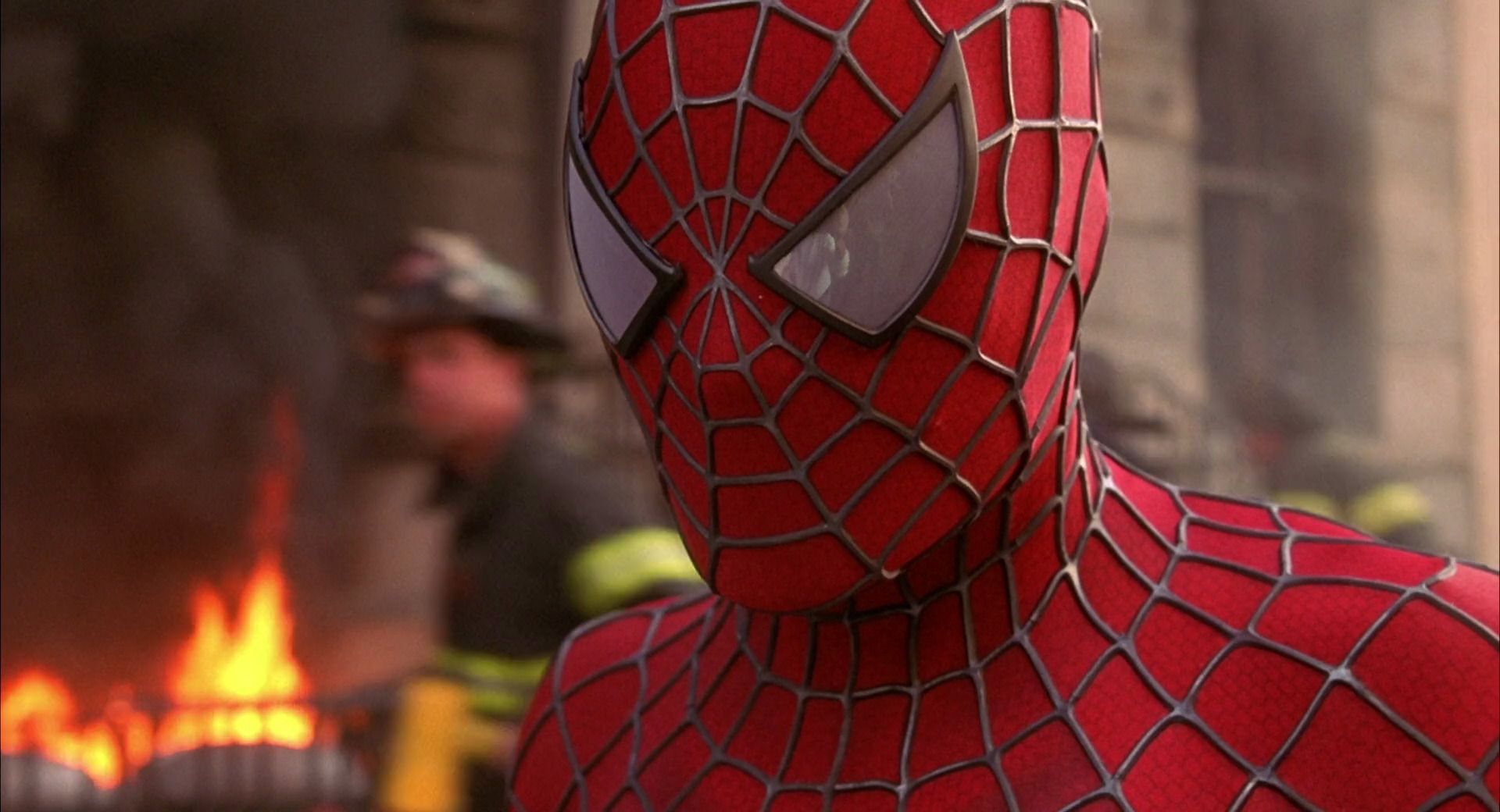
Setting aside the physical look of the film, Raimi’s 2002 masterpiece is the most comic-book accurate in portraying the origin of Peter Parker. The original comic book tale depicts Peter getting bitten in a science lab, fighting in a wrestling arena and gaining his newfound title: Spider-Man.
2012’s The Amazing Spider-Man shows Peter getting bitten in a highly technical Oscorp lab and kind of just…stumbling across an abandoned wrestling arena. It’s a nod to the original, but not quite the same and certainly not as meaningful. It also shows Peter building his highly technical web-slingers and costume, which doesn’t seem very likely no matter how intelligent he is.
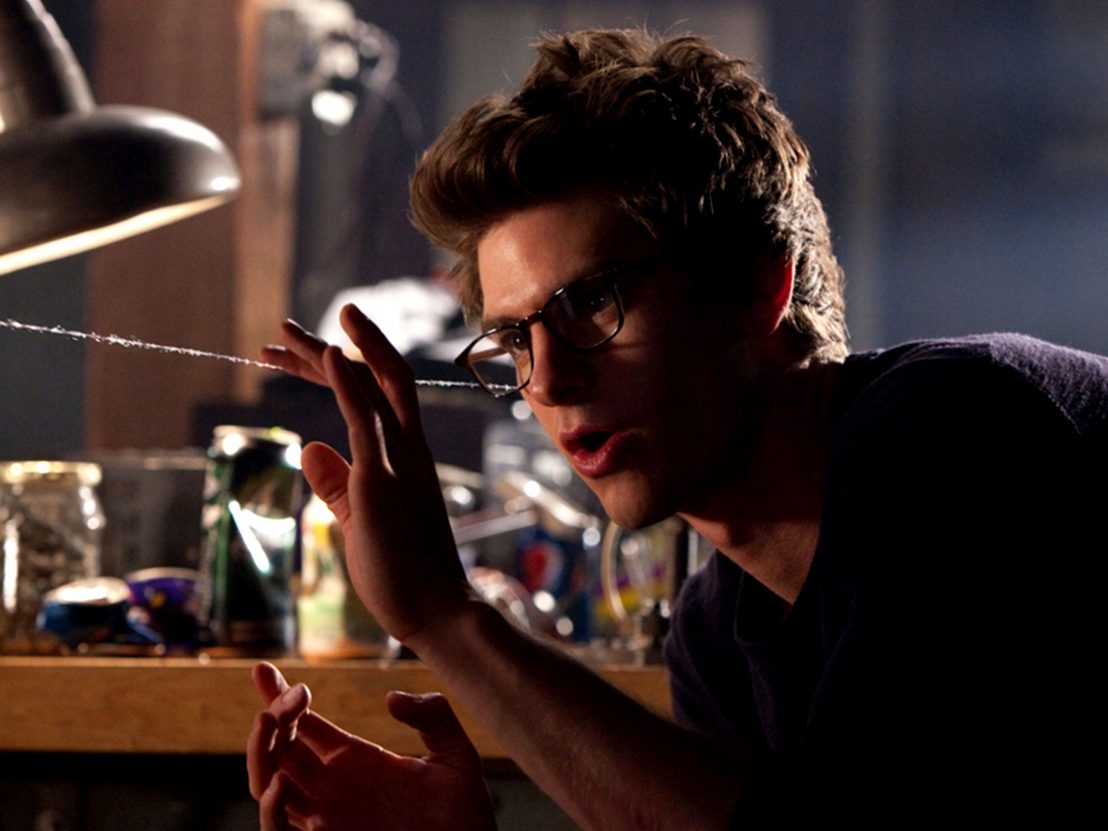
Spider-Man: Homecoming (2017), on the other hand, glosses over the origin completely, which is valid considering the number of times it’s been portrayed. Everybody knows the story. However, this version was NOTHING like the comics. It did its part in fitting into the Marvel Cinematic Universe but didn’t really do the original character justice. This Spidey is also a “gadget-centric Spider-Man” (( Kain )) which is not entirely practical to the character. It’s fun, but it drifts further and further out of relatability which is a critical part a superhero movie must play.
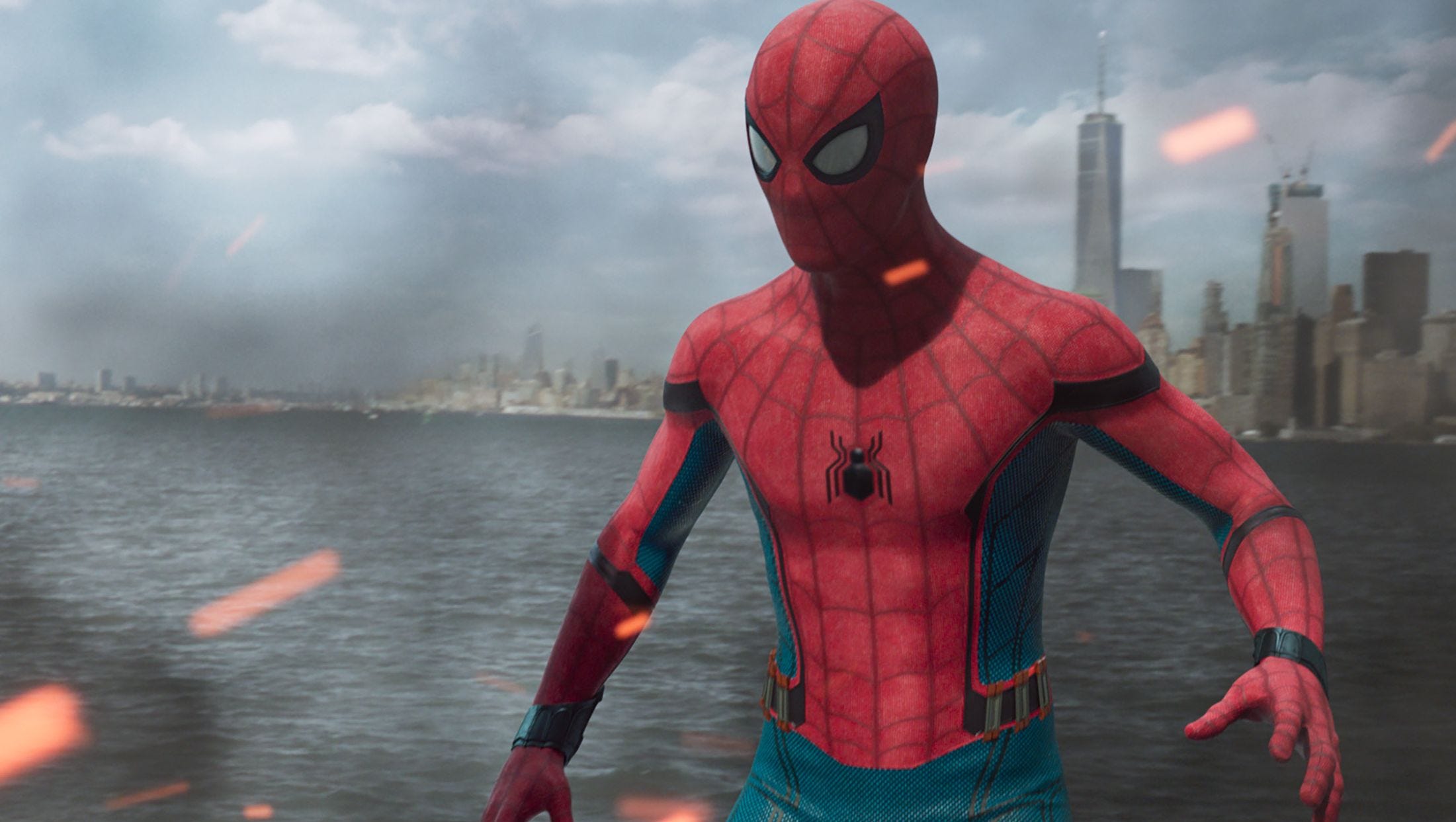
This leads us to the Raimi version. In this film, Peter Parker is bitten on a field trip. Peter becomes involved in a wrestling match, in which he tests his powers and develops his own costume based upon his given wrestling name. Not only is this the most accurate to the comic that inspired it, but this version is the most down-to-earth and fun. It relishes in its comic book inspiration and truly brings that to life onscreen. While it may not be the most realistic or dramatic, this style works. It encapsulates who Spider-Man is as a person, and who his hero will continue to be throughout the course of the trilogy.
Perfectly Balanced Dialogue
Spider-Man’s dialogue adds character to the film, making it differ in all the best ways from the others of its kind. There are serious moments, there are dramatic moments, but most importantly, there is a balance that encapsulates the wonder of the superhero.
As Peter Parker says:
Whatever life holds in store for me, I will never forget these words: “With great power comes great responsibility.” This is my gift, my curse. Who am I? I’m Spider-Man.
Peter Parker | Spider-Man (2002)
Lines like this – riding that thin, thin boundary between cheesy and heroic – are what make Spider-Man the standard for all that would come after, whether cartoon, comic book, or movie. Peter begins with a dramatic opening and a dramatic closing line, which pulls the film together very nicely. It allows for a seamless understanding of the responsibility of the hero. Raimi also incorporated the most important sentence Spider-Man will ever hear into the final lines of the film, leaving us with a critical message to take home.
Then, we have lines from the villain such as this:
I chose my path, you chose the way of the hero. And they found you amusing for a while, the people of this city. But the one thing they love more than a hero is to see a hero fail, fall, die trying. In spite of everything you’ve done for them, eventually they will hate you. Why bother?
Green Goblin | Spider-Man (2002)
While some may argue that this clear-cut line between good and evil is too obvious for a modern audience, it works very well for a superhero origin film. After all – superheroes, despite their vast reach to all ages, are in the end meant for children. The questioning of morality, the clear good and evil, makes us root for Spidey all the more. Ambiguous and complex heroes are great for adults, but to appeal to a wide array of viewers this style of villain works best.
No Spider-Man movie would be complete without his signature quippy lines such as:
Sorry I’m late, it’s a jungle out there; I had to beat an old lady with a stick to get these cranberries.
Spider-Man | Spider-Man (2002)
Raimi sprinkles these lines throughout the entirety of the film. It’s so true of the web-slinger we all know and love – sarcastic and joking even in the face of the direst circumstances. We could all use a little joy and fun when facing the biggest, scariest moments of life, and Peter Parker shows us how to find the funny in fear.
Accurate + Unique Characters
The characters in Spider-Man (most importantly, of course, Spider-Man himself) are just the best possible version they could be, for the most part. They’re relatively accurate, they act as their comic book counterparts do, and they even look similar to the original characters.
Peter Parker
Tobey Maguire’s Peter Parker is a perfect mix of Andrew Garfield and Tom Holland. He comes across as a nerdy outsider that we can root for. He has his weaknesses, but he also possesses the knowledge that his actions have consequences. Ashfiq Islam of the Crimson Times stated that, “Tobey Maguire’s films all portray the steps of Spider-Man and Peter Parker. All the emotional and mental steps” (( Islam )).
We see Maguire’s version go from this innocent, nerdy kid to an adult dealing with relationships, money, and supervillains. But in this very first film, we see every single critical step that makes Peter the way that he is.
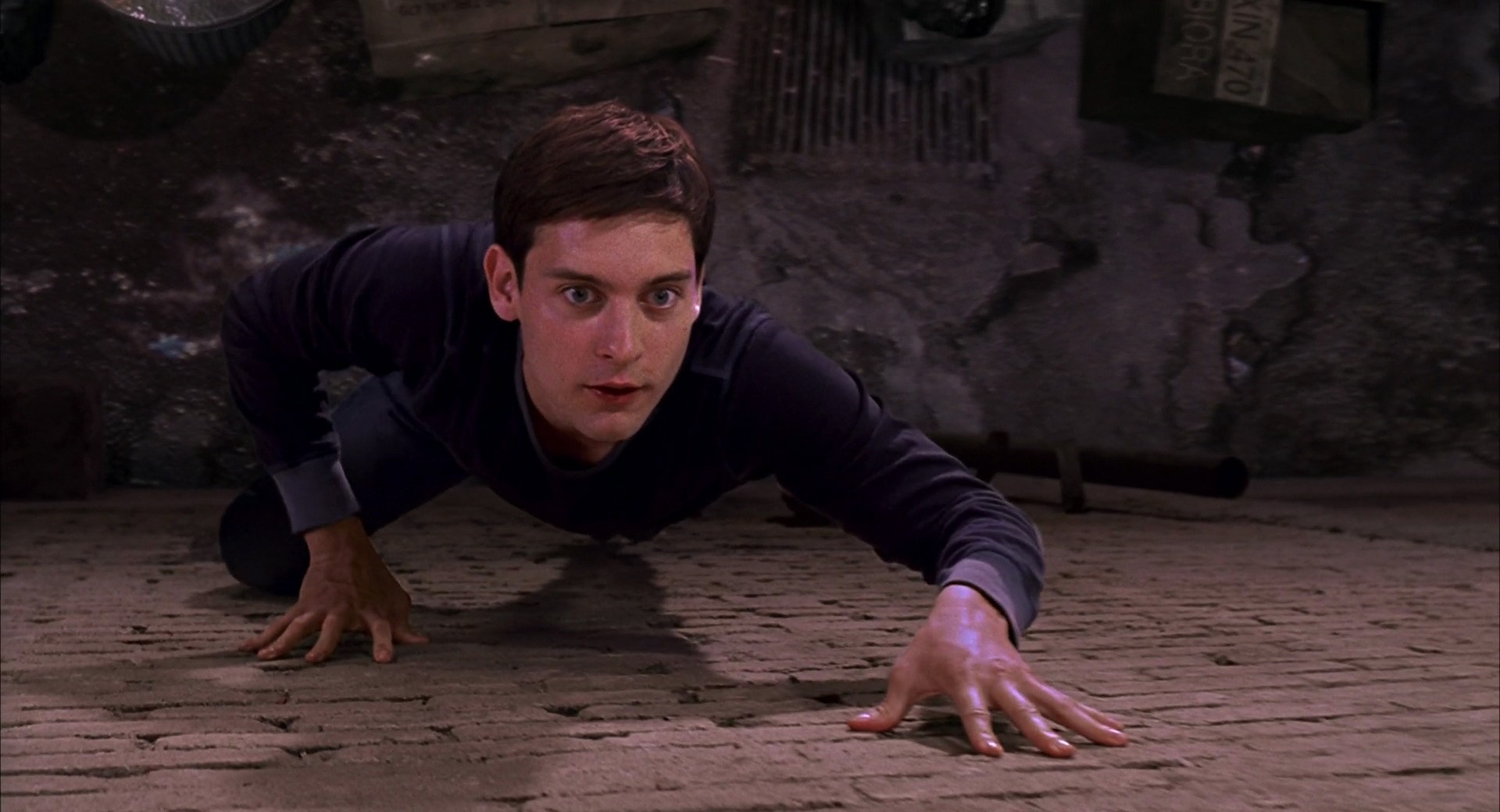
With this in mind, the audience is able to empathize better with Peter and understand his motivations. People can root for a hero they understand, and together Raimi and Maguire did a great job at making this Peter that well-rounded, relatable character. It’s as if he was pulled straight from the pages of the books. No one wants to root for a football player who has everything going for him. With Tobey Maguire, being Spider-Man almost seems like something anyone could do. You CAN be the hero. You have the power to take matters into your own hands.
Aunt May
Aunt May is comic book accurate, at least to the original character. She’s this sweet little old lady, portrayed wonderfully by English actress Rosemary Harris. Aunt May is a resilient woman. Despite her age, she continues to push on regardless of the unreliability of her nephew and the death of her husband.
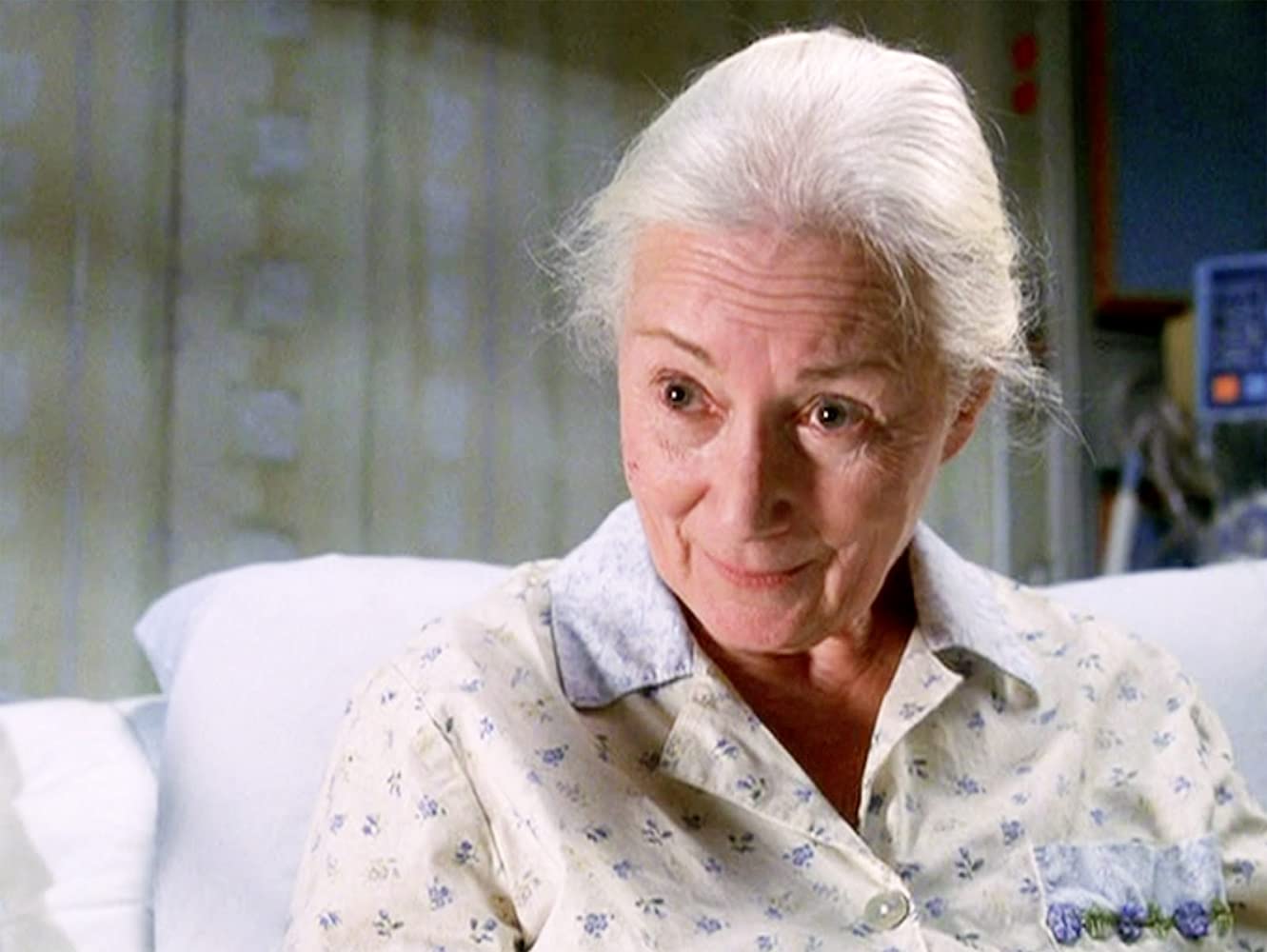
While age doesn’t really matter in the case of this character, Aunt May seems to give a certain purpose to Peter’s actions. It also gives power to her character – she is capable of fending for herself, while simultaneously being the “…the sweetest Aunt May of them all” (( Perez )).
Uncle Ben
The death of Uncle Ben is one of the most iconic moments in all of super-human history, perhaps only second to the well-known demise of Batman’s parents. It’s a critical scene that defines who Spider-Man is and who he becomes as a hero. Uncle Ben is portrayed by the late Cliff Robertson, who does a great job of depicting his character’s resilience and strength in attempting to be a father figure to his distraught nephew.
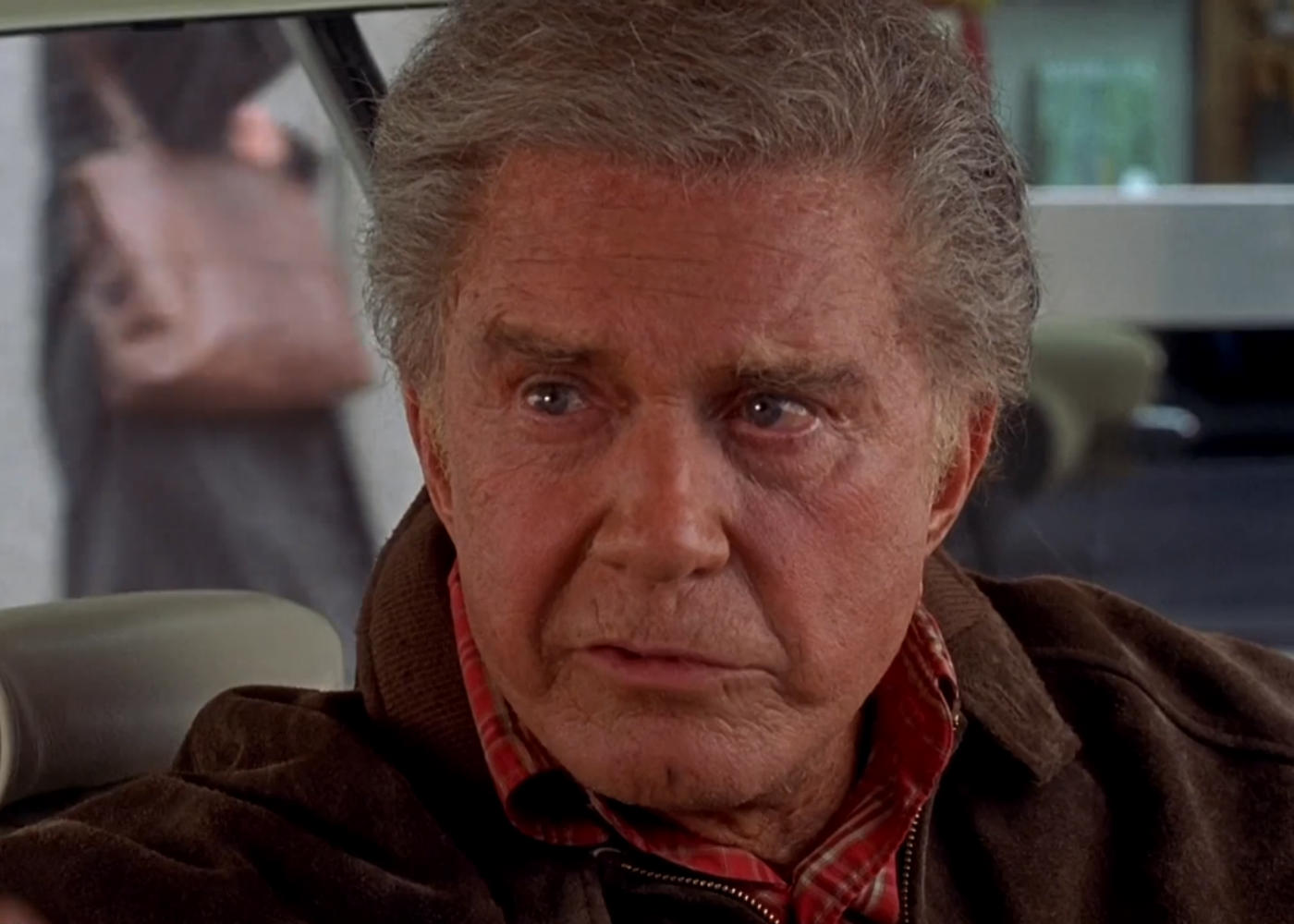
Unlike The Amazing Spider-Man, this film keeps the death scene accurate. Peter refuses to stop a robber, who in turn murders his uncle. It’s heart-wrenching, painful, and hard to see. It’s the trauma that changes Peter’s life and encapsulates why the web-slinger is the way that he is. This event is SO terrible that it pushes Peter into adulthood, and that’s why it’s so necessary. This version of Uncle Ben is also the ONLY one to utter the line, “With great power comes great responsibility.” Without that line, our hero is nothing. He’s the driving force for all that he does, the core of who he is as a human being.
The Exceptions (Kind of)
The only exception to this perfect casting is in consideration of two specific female characters: Mary-Jane Watson and Gwen Stacy. While both girls look like their book counterparts, in the comics Gwen Stacy is the initial love interest, while Mary-Jane comes after Gwen’s death. This is another huge turning point for Peter, and while it makes sense that they just chose to go with the option that would save time, it would have perhaps improved the story-line to see it.
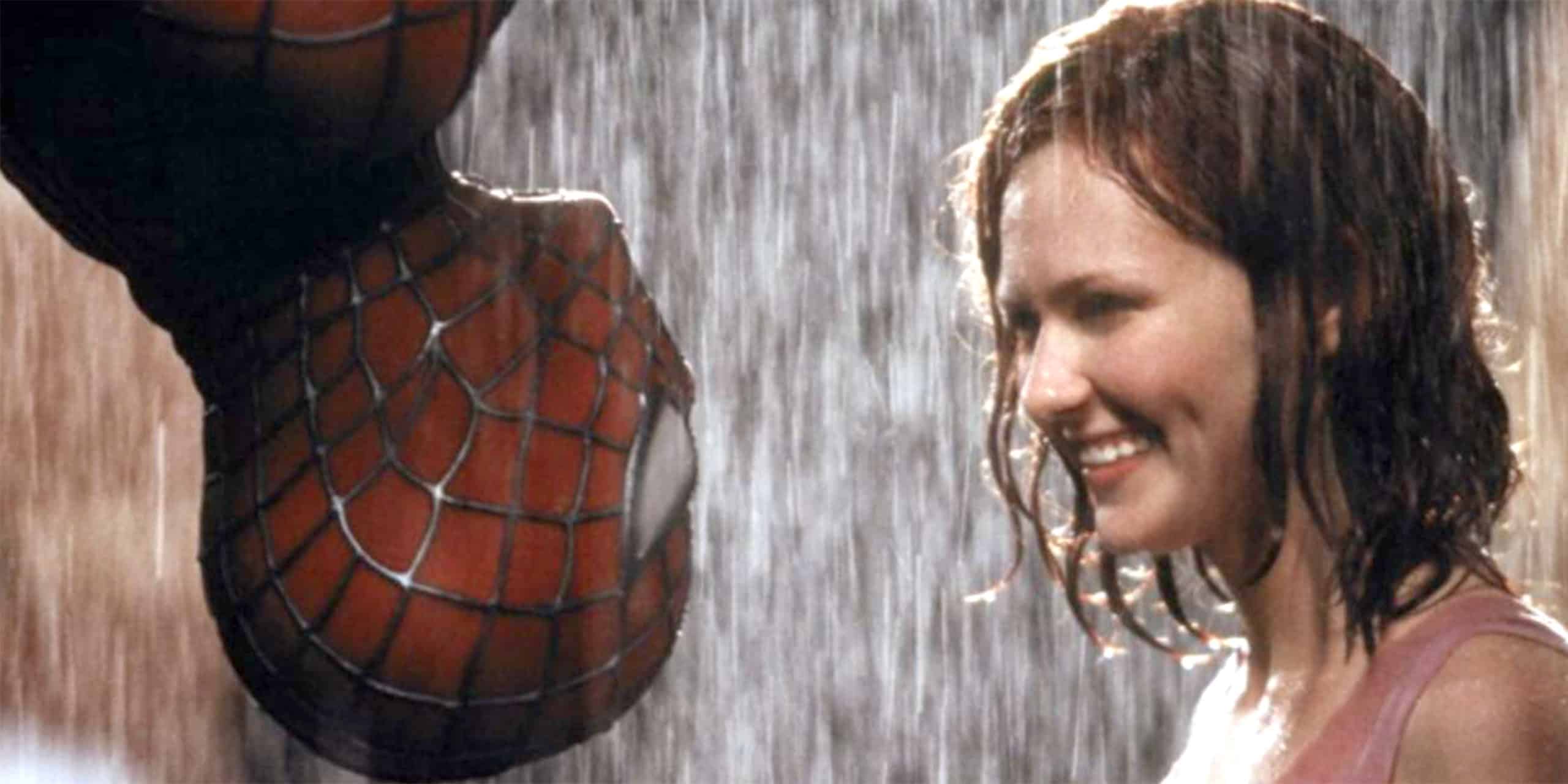
Another issue with Mary-Jane is her personality within the films. A source reports: “This Mary Jane is selfish and thinks everything should go her way. If it doesn’t, then she’s instantly going to betray you” (( Epps )). In fact, this drives a lot of the action later on in the Raimi Spidey series. However, it’s not so overbearing that it takes away from the story, and the love between Peter and MJ is still worth rooting for in the end. Also – who could forget the iconic rain scene?
Danny Elfman
A critical piece of any superhero film, or film in general, is the score. This is the “soundtrack” of the film that guides the audience through the emotion, intensity, and pacing of a movie. Spider-Man’s is part of what really makes it work. WHO could forget the incredible score by Danny Elfman? Without the whimsical notes of his music floating in the background, Spider-Man would certainly not have worked as well.

The “Main Title” plays as we are introduced to the credits. We also see bits and pieces of the characters in the film: some webs, the mask of the Green Goblin, and even a little bit of the suit. In just this three-minute sequence, we have a complete idea of the type of story we’re getting. The score leads right into Peter’s opening monologue and…it’s perfection. We are swept into the story and we haven’t even seen the main players.
“Transformations” takes us through the metamorphosis of the villain. The high, tiny violin makes us uncomfortable right along with Osborne as he injects himself and ultimately becomes the terrifying villain Peter will face. Elfman’s score is eerie and creepy, raising goosebumps and sending shivers down spines. It hints at what we should be feeling anytime we see these characters onscreen. It’s such a subtle thing, and yet has such an impact. With different music, the Goblin may have come off as cheesy or non-threatening. With this…he’s terrifying.
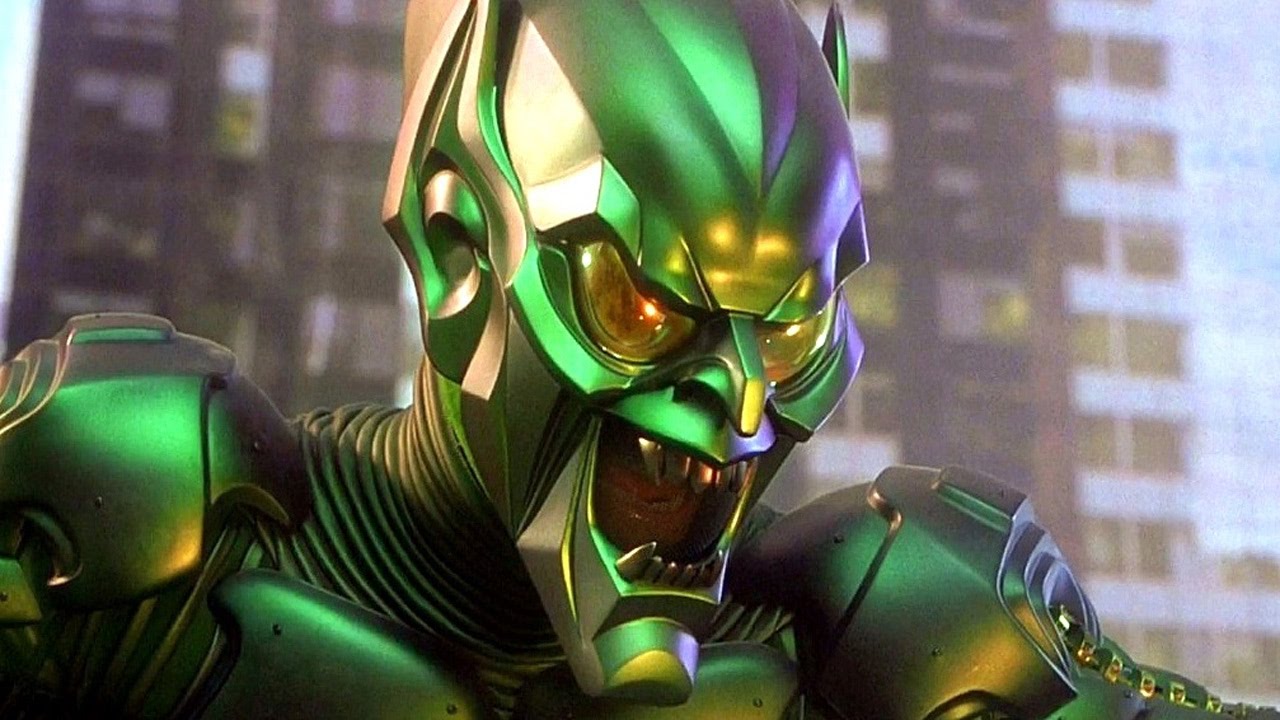
“Farewell” leaves us with a sense of determined whimsy…a feeling that, no matter how lost we are, the hero is always inside. “With great power comes great responsibility”. We know that there is more to come from the hero, and he will grieve what he has lost but tomb eon with strength to face the dawn of a new day. It’s sad as he says goodbye but shifts into an upbeat, heroic tune. The world awaits, and the hero will rise to conquer those who raise a challenge.
The rest of the movie is filled to the BRIM with wonderful compositions by Elfman. They bind everything together in this wonderful way that allows the story to become much more emotionally impactful. It’s a core piece that isn’t super obvious upon first glance, but without it, Spider-Man just wouldn’t be the same.
The Dominant Spidey
Tobey Maguire’s version of Spider-Man is the best for a variety of reasons. It’s stylized like the comics that it came out of, from the costumes to the plot to the origin of Peter’s powers. The dialogue is quippy and smart, nothing that can’t be understood by a person of any age. The characters echo their hand-drawn counterparts in a beautifully crafted format on the screen. A wonderful score by Danny Elfman ties everything together.
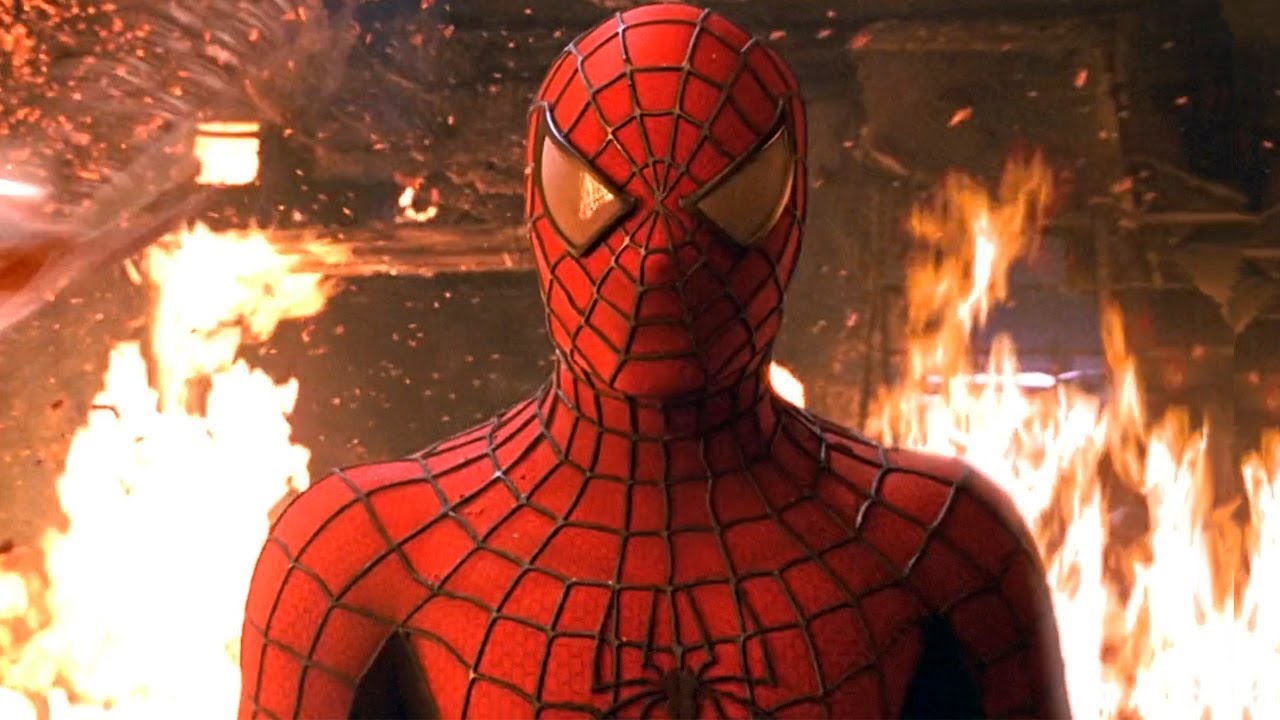
There are so many other reasons why Sam Raimi’s piece is the best of its kind, but it can really only be understood by watching like so many have. Popular modern superhero films have built off of the route Maguire took, and it’s likely that more will continue to in the future. While there are many great Spiderman and superhero movies out there, none will ever come close to the originality and greatness of the 2002 web-slinger.
